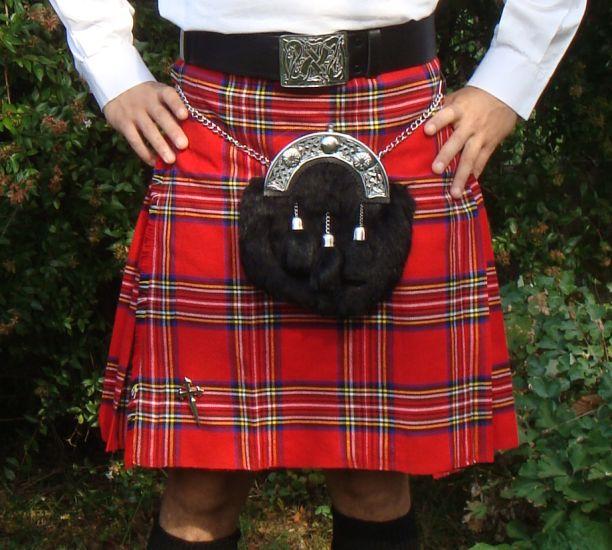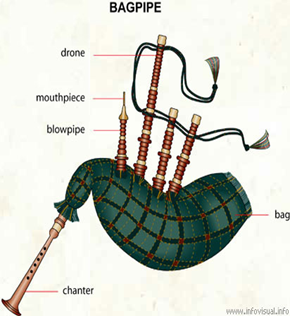
- •Англоязычные страны: факты, культура, традиции
- •I. The British Commonwealth of Nations
- •Fast Facts
- •II. The Commonwealth Members
- •Australia
- •1. English is … most spoken language in the world.
- •2. Work in pairs. Ask your partner what facts above are already known to him (her) and what are not.
- •IV.History. England. The Great Mystery of Stonehenge
- •1. Read the text about one of the world’s wonders.
- •V. Festivals and Traditions. Ireland. St. Patrick’s Day
- •1. Guess the meaning of the following words and word-combinations:
- •2. Read the text and be ready to answer the questions below.
- •VI. Culture. Scotland. Kilt. Bagpipe
- •1. Tell if the statements about kilt are true or false.
- •2. Work in pairs. Match the following English words with Russian equivalent. For help use the picture.
- •3. Read and translate the text paying attention to the words in bold.
- •VII. Languages. Wales. The Welsh Language
- •1. Look at the example of Welsh language and compare it with English. Have both languages anything in common?
- •2. Read the text about the Welsh language and be ready to answer the questions.
- •VIII. British Prominent People
- •1. Read the information about some of the most famous Britons.
- •2. Great Britain is also famous for other eminent people. What do you know about them? Match the person to the appropriate field of his/her activity
- •Us History Facts Chart
- •II. The United States of America: General Facts
- •III. Us Sights and Cities
- •IV. Some Facts AboutUs Higher Education
- •Ivy League
- •Ivy League Facts Chart
- •V. Some Facts about American Way of Life
- •2. Mayflower is …
- •Оглавление
VI. Culture. Scotland. Kilt. Bagpipe

List
of unknown words:
ancestry – наследие, происхождение, истоки
honour – честь, почет, гордость
plaid – клетка, клетчатый рисунок
damp – сырой, влажный
garment – одежда, одеяние
Kilt
F or
anyone of Scottish ancestry, the kilt is a symbol of honour for the
clan which they belong. Prior to 1792 those who wanted to wear the
kilt in the Lowlands or Britain, had to join the British army. The
reason being that because the English were afraid that if they let
anyone wear the kilt it would spark the idea of revolution.
or
anyone of Scottish ancestry, the kilt is a symbol of honour for the
clan which they belong. Prior to 1792 those who wanted to wear the
kilt in the Lowlands or Britain, had to join the British army. The
reason being that because the English were afraid that if they let
anyone wear the kilt it would spark the idea of revolution.
The various plaids that one can see from time to time are the colors of the particular clan that the wearer belongs to. The kilt is more than just a covering. It allowed those who wore it to move much more freely, especially in the Highlands of Scotland where the weather can become very damp. With its tight weave of strong wool, it created a barrier between the rain and skin. When the nights became cold, this garment was easily removed and spread out to create a blanket to keep the person warm. If the army needed to move with a quicker force, the garment could be easily removed, allowing the soldier more freedom of movement.
Today the kilt is the national dress of Scotland and worn by many.
1. Tell if the statements about kilt are true or false.
1. Kilt is the symbol of young age.
2. The various stars that one can see from time to time are the colours of the particular clan that the wearer belongs to.
3. It allowed those who wore it to move much more freely especially in the Highlands of Scotland where the weather can become very damp.
4. Today the kilt is the national dress of England and worn by many.
2. Work in pairs. Match the following English words with Russian equivalent. For help use the picture.
b agpipe пастух
agpipe пастух
rustic басовая трубка волынки
herdsman волынка
reed pipe деревенский, сельский
squeezing клапан
drone pipe трубка волынки
chanter сжимая
mouthpipe загубник
flap тростник
3. Read and translate the text paying attention to the words in bold.
The origins of the bagpipe can be traced back to the most ancient civilizations. The bagpipe probably originated as a rustic instrument in many cultures because a herdsman had the necessary materials at hand: a goat or sheep skin and a reed pipe. Through Celtic migration it was introduced to Persia and India, and subsequently to Greece and Rome. During the Middle Ages, however, the bagpipe was heard and appreciated by all levels of society.
Bagpipes have always been made in many shapes and sizes, and have been played throughout Europe from before the Norman Conquest until the present day.
The construction of the bagpipe allows a continuous supply of air to be maintained. By squeezing the bag with his left hand while a breath is taken, the flow of air can be kept up in both the drone pipes and chanter. Other features of this instrument are the mouthpipe and the double reed of the chanter and drone. The mouthpipe contains a round piece of leather hinged onto the bag end which acts as a one way valve. As the player blows air in, the flap opens; when he stops blowing the air pressure within the bag forces the flap shut.

